aka the “Correlation is not Causation” post
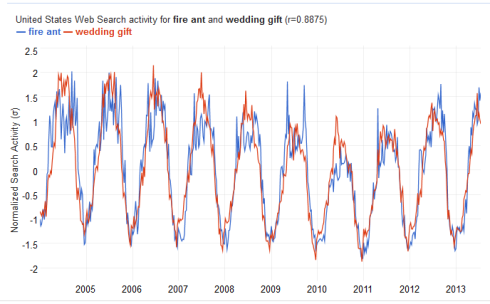
Google search activity for “fire ant” and “wedding gift” show a strong correlation. (via Google Correlate)
While playing with Google Correlate recently, I discovered that lots of people tend to search for the term “fire ant” at the same times when lots of people search for the term “wedding gift.” In fact, with regards to being the search term most strongly correlated with “fire ant,” searches for a “wedding gift” rank second only to searches for “fly traps.” (I am uncertain if this latter represents an urgent need for pest control solutions or carnivorous plants, but I wish people luck in their quest.)
What does this mean? Do fire ant stings somehow induce people with a desire to form government-recognized pair bonds, or at least acquire gifts for such events? Does the proliferation of wedding cake cause outbreaks of ravenous stinging ant populations? Could the fire ants themselves be the ones searching for the perfect, tiny wedding gift?
Or, more likely, does this correlation highlight the strongly seasonal nature of both these phenomena? I’ll let you judge that for yourself and also tell you that the answer is that last one. In fact, fluctuations in fire ant and wedding gift searches are more likely affected by fluctuations in temperatures, weather, and times that are convenient to fly in-laws across the country. These similar direct causes (with the exception of vacation time and airfare, which fire ants tend not to worry about) probably lead to the indirect correlations. This is a fun reminder that establishing causality can be challenging, and statistics must be interpreted with care.
Judging by the graph of search activity, the need to deal with both weddings and pesky fire ants peaks in summer months and tapers off sharply in the cold of winter, when presumably both ants and prospective happy couples go dormant for the winter.
Other notable seasonal search terms that correlate with “fire ants”:
- 0.8307 – kentucky bluegrass (I assume the lawn sod and not the music genre)
- 0.8284 – exterior paint
- 0.8168 – caterpillars
- 0.8153 – garter snakes
- 0.8083 – pond water (why do people search for this?)
- 0.7947 – plant identification
- 0.7897 – autumn joy (which is apparently a flower and not an indication that fire ants bring happiness)
- 0.7889 – deck sealer
- 0.7859 – snake identification (snakes form a large subset of the list, which I take as evidence that life’s unpleasant venomous biting things come in clusters)
- 0.7854 – hummingbirds
- 0.7810 – festivals (unfortunately, also not typically fire ant themed, although I’m sure the ants attend when able)
- 0.7805 – sale signs
- 0.7760 – house spiders
- 0.7732 – frisbee
“Wedding gift” on the other hand tends to correlate extremely strongly with terms involving golf, for reasons I will leave to some other scientist to explore.



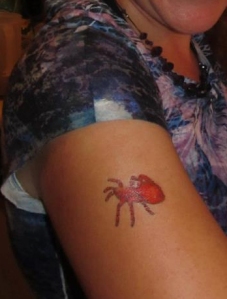


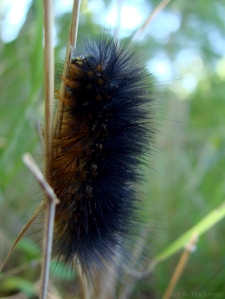



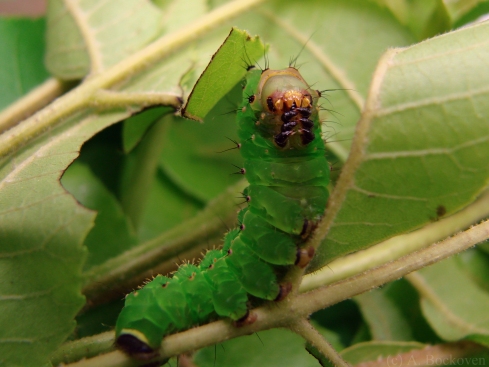



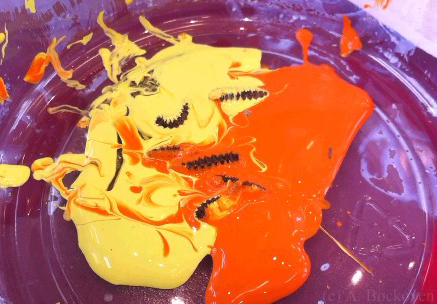


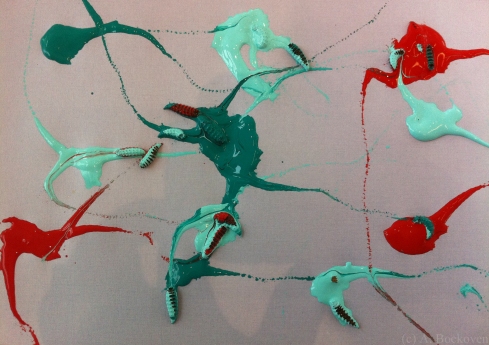


Recent Comments